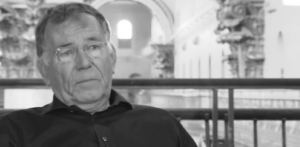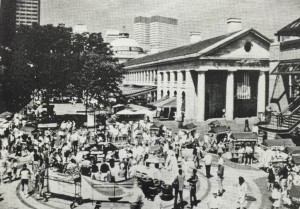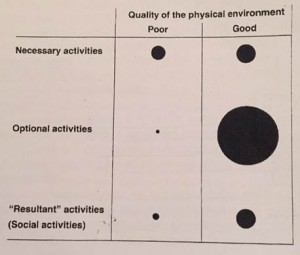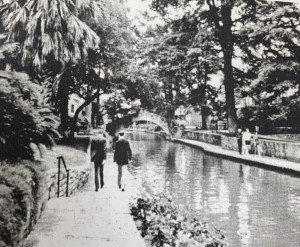About the Author
Jan Gehl is a Danish Architect and urban design consultant based in Copenhagen and whose career has focused on improving the quality of urban life by re-orienting city design towards the pedestrian and cyclist. He received a Masters of Architecture from the Royal Danish Academy of Fine Arts in Copenhagen in 1960, and practiced architecture from 1960 to 1966. He received many awards and made huge developments. He published his first famous influential Life Between Buildings in Danish in 1971 which advocates a sensible, straightforward approach to improving urban form.
Designing an outdoor space
Gehl argues that designs that encourage people to spend time outdoors and make interacting with other people outdoors enjoyable can make a big difference in city dwellers` quality of life. A good design will have a negligible impact on whether or not these activities take place, though they will affect how enjoyable they are. If the physical environment makes them pleasant, people will engage in them; if it doesn’t they won’t.
Gehl advocates designs that assemble, integrate, invite, and open up.
Assemble: The idea of how design can assemble people is well illustrated by an everyday example. Narrow streets between residents, narrow deep stores in the mall, are all examples to assemble people and increase social contact.
Integrate: Good design can bring people in contact with one another no matter how they are. Gehl thinks a little bit of urban disorder can be a good thing.
Open up: a building with windows directly to the street, allows people to interact with building activities.
Asking a question, at the core of Gehl`s philosophy, is the space between buildings is the most important space for human contact?
Three Types of Outdoor Activities
Outdoor activities in public spaces can be divided into three categories, each of which places very different demands on the physical environment: necessary activities, optional activities, and social activities.
Necessary Activities: everyday tasks and pastimes belong to this group. all activities in which those involved are to a greater or lesser degree required to participate. ( a great majority of those related to walking ).
Optional Activities: Activities that requires time and place to do. This type is especially dependent on exterior physical conditions.
Social Activities: are all activities that depend on presence of others in public spaces. So its all about interacting with others by greetings and talking, and physical framework doesn’t have a direct influence in it.
Its really important to take care of outdoor activities, because if outdoor areas become poor quality, only strictly necessary activities occur.
These activities also termed “resultant” because all instances they evolve from activites linked to the other two activity categories and they develop in connection with the other activities.
Graphic representation of the relationship between the quality of outdoor spaces and the rate of accurrence of outdoor activities.
When the quality of outdoor areas is good, optional activities occur with increasing frequency. Furthermore, as levels of optional activity rise, the number of social activities usually increases substantially.
The reason behind reviewing these activities is because the presence of people, activities, events, etc.. Comprise one of the most important qualities of public spaces. All of the types are important together and not individually.. People walk, sit, and talk.
Relation to Qatar : Press on link below
References :
LeGates, R. (1996). The city reader. London: Routledge.
Three Types of utdoor Activities. (2013, March 18). Retrieved from http://www.rudi.net/books/3610
Cilento, Karen. “Danish Design Interview / Jan Gehl” 07 Oct 2011. ArchDaily. Accessed 09 Apr 2015. <http://www.archdaily.com/?p=174721>
Written by: Sara Al-Khalifa




